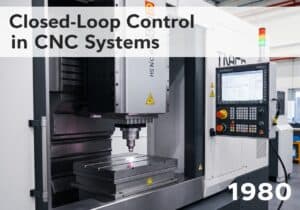A methodology using statistical tools, including control charts, to monitor and control a process, ensuring it operates at its full potential to produce conforming products.
- Metodologías: Lean Sigma, Fabricación, Calidad
Control estadístico de procesos (CEP)

Control estadístico de procesos (CEP)
- Mejora continua, Gráfico de control, Capacidad de proceso, Mejora de procesos, Control de calidad, Gestión de calidad, Control estadístico de procesos (CEP), Reducción de residuos
Objetivo:
Cómo se utiliza:
- Involves collecting data on key process or product characteristics, plotting this data on control charts, and analyzing these charts to identify and distinguish between common cause and special cause variations, aiming to reduce variation and improve capacidad de proceso.
Ventajas
- Leads to improved product quality and consistency; Reduces waste, rework, and inspection costs; Provides data-driven insights for process improvement; Empowers operators to monitor and control their processes.
Contras
- Requires a foundational understanding of statistics and control chart interpretation; Implementation can be complex and requires management commitment; Data collection must be accurate and consistent; May not be suitable for all types of processes (e.g., very short runs, highly custom).
Categorías:
- Lean Sigma, Fabricación, Calidad
Ideal para:
- Improving and maintaining process stability, reducing variability, and ensuring products consistently meet specifications.
Statistical Process Control (SPC) finds extensive application in manufacturing, healthcare, food production, and any industry where process stability and quality are paramount. For example, in automotive manufacturing, SPC is employed to monitor the assembly line processes, ensuring that components consistently meet the required tolerances, thereby enhancing product safety and reliability. In the healthcare sector, SPC can evaluate patient care processes, leading to improved treatment outcomes by minimizing variability in medical procedures. This methodology is particularly beneficial during the production phase of projects, where ongoing monitoring of product characteristics helps identify issues in real-time, allowing for timely interventions. Team members such as quality engineers, process operators, and production managers typically initiate SPC practices, cultivating a culture of quality awareness and continuous improvement within the organization. Training sessions might be conducted to ensure all participants are skilled in using control charts and analyzing data trends effectively. The statistical data generated through SPC not only fuels process improvement initiatives but also serves as a basis for regulatory compliance in industries subject to stringent quality standards. Furthermore, adopting SPC reduces the likelihood of product recalls, leading to improved customer satisfaction and loyalty, which are crucial for a company’s long-term success in a competitive market.
Pasos clave de esta metodología
- Select key process or product characteristics for monitoring.
- Establish control limits based on historical data.
- Create control charts to visualize process data over time.
- Analyze control charts to identify common cause variations.
- Investigate special cause variations when they occur.
- Implement corrective actions to address special causes.
- Monitor ongoing processes and adjust control limits as necessary.
- Regularly review and update control charts to reflect changes in the process.
- Train staff on SPC techniques for better process oversight.
Consejos profesionales
- Utilize Attribute Control Charts for qualitative data to detect shifts in product quality that traditional variables charts may miss.
- Incorporate multivariate control charts to analyze interactions between multiple process factors, enhancing understanding of variability.
- Implement real-time data visualization tools to facilitate immediate feedback loops, enabling quicker adjustments to maintain control limits.
Leer y comparar varias metodologías, recomendamos el
> Amplio repositorio de metodologías <
junto con otras más de 400 metodologías.
Sus comentarios sobre esta metodología o información adicional son bienvenidos en la dirección sección de comentarios ↓ , así como cualquier idea o enlace relacionado con la ingeniería.
Contexto histórico
1974
1974
1978
1980
1980
1980
1980
1972
1974
1975-06-01
1980
1980
1980
1980
1980
(Si la fecha es desconocida o no es relevante, por ejemplo "mecánica de fluidos", se proporciona una estimación redondeada de su aparición notable)















Publicaciones relacionadas
Cuestionarios sobre molestias musculoesqueléticas
Pruebas multivariantes (MVT)
Análisis de regresión múltiple
Sistemas de captura de movimiento
Método MoSCoW
Prueba de la mediana de Mood